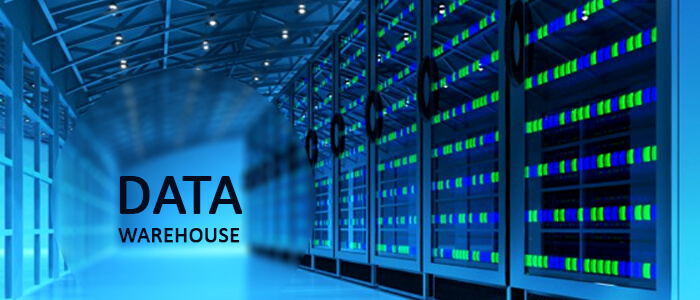Data warehousing is one of the most popular services for businesses right now. Be it their growing digital presence or superior market opportunities, the fact is that the world is generating far more data than ever. And businesses have to reach out to their customers on different platforms, while at the same time bring together all the data together to perform data analytics.
While it might seem like these tasks are on your to-do list, you’re probably in a small market segment or have started a business just a while ago. And it might not even seem like that much a task you can’t do with a resource or your existing database. As comforting as it is now, the situation will grow nothing but adverse as you begin to expand your business. In other words, without a robust platform and system to store and work upon your data, your business will face a lot of challenges as you begin to expand it.

It is where data warehousing comes into the picture. The point is the very nature of data in the world is scattered. But there has to be some mechanism to view it as a single entity so that your business can make sense out of it. After all, if you have 10 different things with equally different values, how will you make sense of everything in one place? Not until you integrate everything one a single platform and have a data management system in place.
What is a Data Warehouse?
A data warehouse is a kind of database that stores your data. More technically, it is a relational database that helps in firing queries and performing analysis. It differs from the traditional database in many senses. For example, in a traditional database, the primary purpose can only be to process transactions.
The very process of data warehousing, therefore, does the task of aggregating data from one platform to another. It helps in easy comparison and business intelligence. Moreover, the data warehouse separates the transactional processing of data from the analysis workload for an organization. This practice helps in consolidating the data from different levels and sources under a single platform.
The reason why you need to know data warehouses is because they can create a direct difference to your business. They provide insights that are much deeper than regular interpretations done via nay other tools or manually. It helps you gain visibility and grow your business in a much superior manner.
Moreover, the very nature of data visibility in an organization presents growth opportunities for business. In most of the alternative processes, a large part of the data is lost in transferring, extracting, and the process of bringing them together. Therefore, when businesses finally try to make sense of whatever data they manage to gather, they are losing out on the insights of the lost data.
Therefore, this impacts the decision making severely and there is no way to figure out what vital information and insight the organization would have lost.
While a data warehouse can contain historical data related to transaction processing, it also includes data from several other sources. It means, that the data coming in from multiple platforms in multiple formats can be consolidated separately for your legacy datasets. And it is entirely up to the businesses to combine them and work upon them as per their wishes.
Apart from being a traditional relational database, the data warehouse also includes an environment commonly known as the ETL. ETL is the abbreviation of Extract, Transform, and Load.
Extract
While extract works on the principle of extracting data, it aims is to pull out data that is present on different sources or different platforms. It is because multiple platforms generate data in their fashion. They have their reporting style, formats, visualizations, and more. Before we combine them onto one single platform, it is important to extract them from their very source.
Transform
Once the extraction of data takes place, the next job is to transform the data. It means transforming the data in a single format, no matter what. And this has been done because to see the data as a unified single. The task of transformation is one of the most difficult tasks in cloud data warehousing. It is also the reason why it takes a significant amount of time. It wouldn’t be incorrect to say that that the task of transformation is fundamental to the success of data analytics for a business.
Load
After the transformation takes place, it becomes important to load the data on the space allocated in the data warehouse. It can be done either incrementally or all at once. While loading all the data at once is not suggested, the best practice is to load the data onto the data warehousing space gradually in a step by step manner.
Things to Look Out For
The robustness of a data warehousing system depends upon several factors. While there are several popular options in the market, you must go on with the one that integrates well with your ETL environment.
- Your data warehousing system must be subject-oriented. It means that if you find out which of your products were the best-selling in the last year or which customer purchased a particular item the most, your data warehousing system must be able to answer.
- Data warehousing must be non-volatile. It means that once the data enters the warehouse, it should not change. It helps analyze the details of the patterns in data from the very beginning.
Data warehousing can create all the difference between the success and failure of your business. It helps you take your business to new heights by managing your data well and performing cost-effective analytics.
Recent Blogs
Categories



